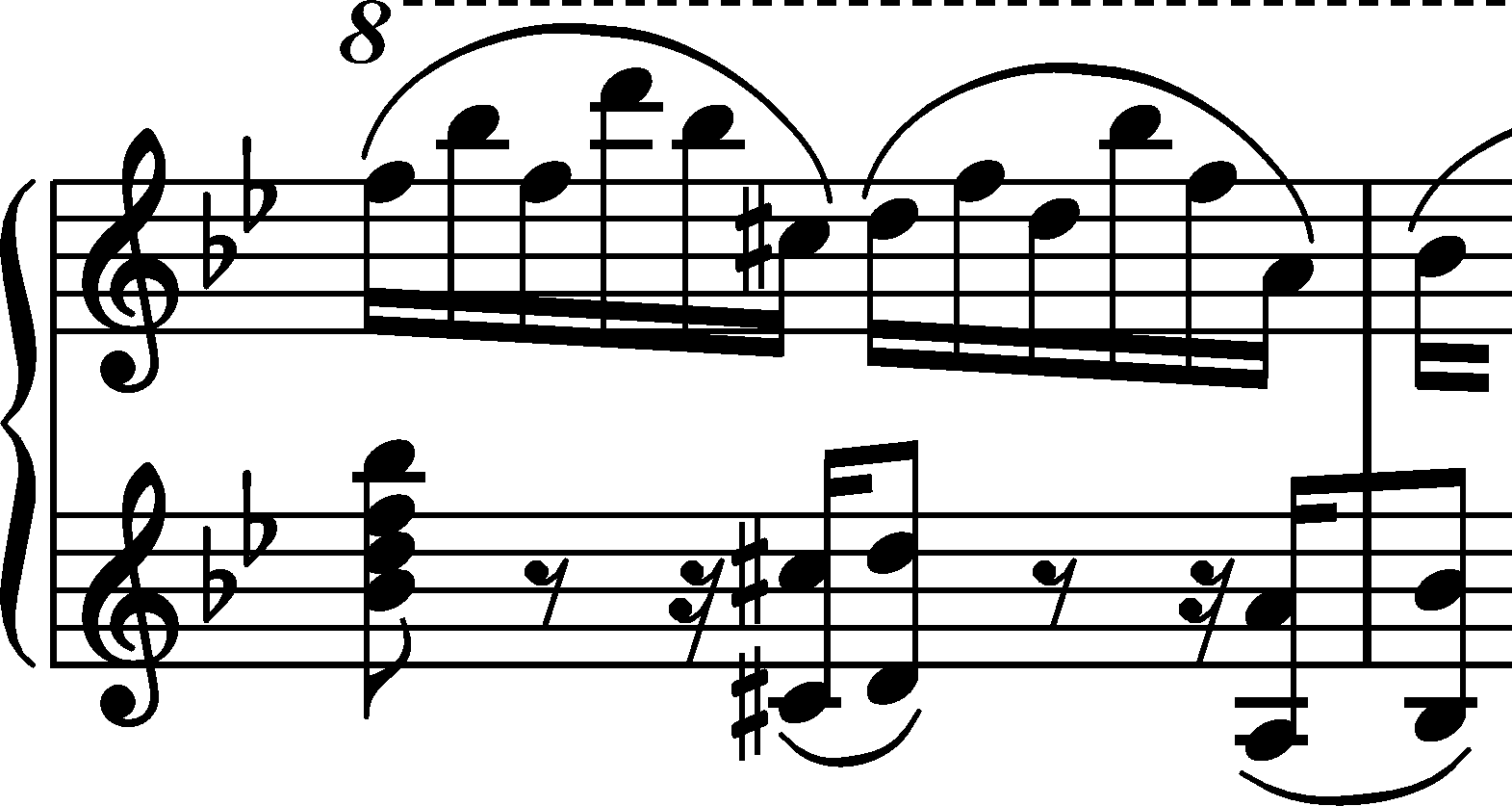



|
b. 269
|
composition: Op. 11, Concerto in E minor, Mvt I
category imprint: Differences between sources issues: EE revisions |
||||||||
|
b. 269-270
|
composition: Op. 11, Concerto in E minor, Mvt III
..
Both fingerings appearing in the sources are compliant in terms of the 5-4-5 succession of fingers at the top of the passage, typical of Chopin. In the descending part of the passage, FEH gives a crossing-over of the 5th finger, which also belongs to the range of Chopinesque fingering options – cf. the Impromptu in A category imprint: Differences between sources issues: Annotations in teaching copies , EE revisions , Differences in fingering , Annotations in FEH |
||||||||
|
b. 269
|
composition: Op. 16, Rondo in E♭ major category imprint: Source & stylistic information |
||||||||
|
b. 269-272
|
composition: Op. 22, Polonaise
..
We place this and the next L.H. semiquavers between the last two semiquavers of a respective R.H. triplet, in accordance with the notation of the sources. However, according to us, it is uncertain whether it complies with the notation of [A] and with the performance intended by Chopin – in a figuration in the ending of the Variations in B category imprint: Source & stylistic information |
||||||||
|
b. 269
|
composition: Op. 44, Polonaise in F♯ minor
..
In the main text we omit the b note in the chord on the 4th quaver of the bar. Chopin removed it in analogous b. 36 while proofreading FE and almost certainly forgot to do it also here – the reprise of the main section of the Polonaise was not written out in the manuscripts, which proves that Chopin did not foresee any differences between these fragments, particularly so minor. category imprint: Editorial revisions |






 Major, Op. 29,
Major, Op. 29,  .
.